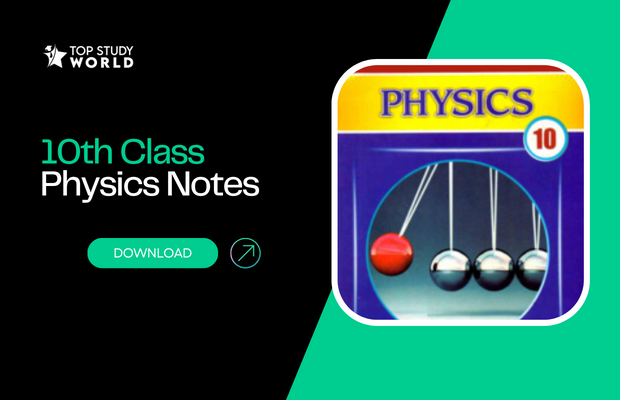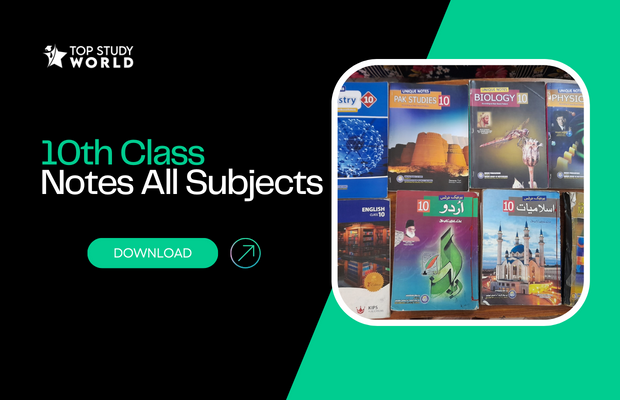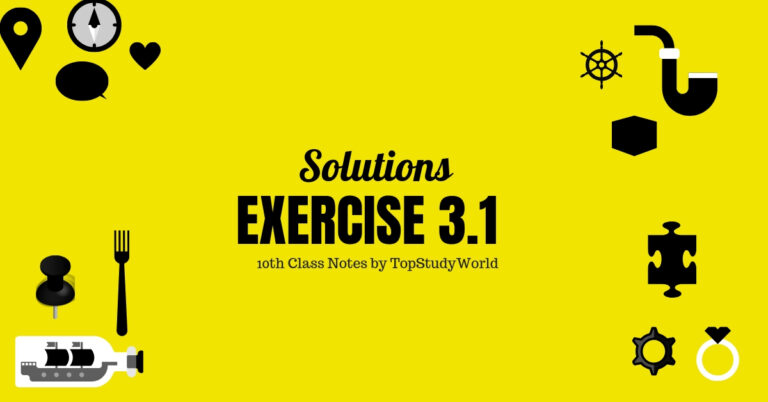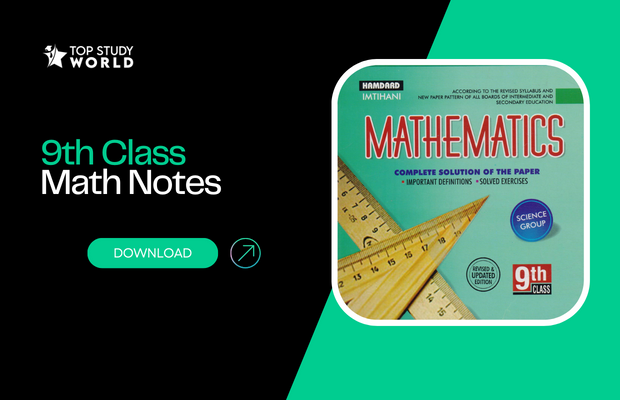The Class 10 Physics Notes for federal board students as per new Syllabus FBISE covers a wide range of topics in physics, including simple harmonic motion, waves, sound, geometrical optics, electrostatics, current electricity, electromagnetism, introductory electronics, and information & communication technology. These notes are designed to help students understand the basic concepts of physics and to prepare them for the 10th Class Physics exam.
The notes are written in a clear and concise style that is easy to understand. They also include diagrams and illustrations to help students visualize the concepts. The notes are a valuable resource for students who are studying physics for the 10th Class exam.
See Also: 10th Class Notes (For All Subjects)
In these notes, short questions, long questions, and numerical solutions are given so that you don’t need to stop your head with your book. Here are the chapters of 10th Class Physics that are present in the notes:
CHAPTER 10: SIMPLE HARMONIC MOTION AND WAVES

The first chapter in the book is about wave motion is the propagation of disturbances from one place to another.
The important topics are:
- Prove that mass attached with a spring is a simple harmonic motion
- What is a simple pendulum? Prove that motion of the simple pendulum is SHM
- Prove that v=fh where v= wave speed, f=frequency, h=wavelength
- What is meant by the fundamental frequency of stationary waves? How higher frequencies relate to fundamental frequency?
- What are notes and antinodes?
Do you know?
Water is the second most common molecule in the universe. The most common is hydrogen gas, H2
Download PDF Chapter 10 – Simple Harmonic Motion and Waves
Content: Numerical Problems, Exercise Solution, Theory
CHAPTER 11: SOUND

Physics is stuffed with engaging and practical concepts. This chapter is interesting because it is all about the sound we hear all the time. Now it is time to understand its origin. The important topics included in this unit are:
- Write the factors on which loudness of the sound depends.
- Explain Weber Fechner’s Law
- Define ultrasonics and write their uses
- Describe the structure of the ear, and the process of hearing
Do you know?
The speed of sound is around 1,230 kilometers per hour. A Pakistani bike runs around 60-90 kilometers per hour on the road.
Download PDF Chapter 11 – Sound
Content: Numerical Problems, Exercise Solution, Theory
CHAPTER 12: GEOMETRICAL OPTICS

It might be the most complex chapter for you because this chapter is all about mirrors and lenses – and arrows. With these notes, it would become easy due to easy words.
Let’s see what we can expect to learn from this chapter.
- Drive Spherical Mirror Formula
- Write three uses of the spherical mirror?
- What are the laws of Refraction?
- Define the critical angle and prove it.
- What is the total internal reflection? Write its conditions
Do you know?
A concave lens spreads out the light rays before they enter the eye so that they are focused on the retina and the image is sharp.- Factmonster
Download PDF Chapter 12 – Geometrical Optics
Content: Numerical Problems, Exercise Solution, Theory
CHAPTER 13: Electrostatics

Electrostatics is the study of forces between charges, as described by Coulomb’s Law. Don’t just brush through this chapter if you wish to continue studying physics for higher studies. This branch of physics becomes more and more important in higher levels of study.
The important topics are:
- Explain the phenomenon of electric induction
- Describe the Gold Leaf Electroscope experiment
- Explain Coulomb’s law and write mathematical form
- Find electric intensity at a point due to positive charge Q in the field
- Explain the series combination.
Do you know Electric fields work in a similar way to gravity! Except for gravity always attracts but electric fields can either attract or repel. – Smart-learning
Download PDF Chapter 13 – Electrostatics
Content: Numerical Problems, Exercise Solution, Theory
CHAPTER 14: CURRENT ELECTRICITY

Current is a flow of electrical charge carriers, usually electrons or electron-deficient atoms. The chapter is included in the syllabus to encourage students to dig into the depths of perhaps the most important area of physics. The important topics are:
- What is the difference between potential Difference and (e.m.f) Electromotive force?
- State Ohm’s law and drive it.
- What are the factors upon which the resistance of the conductor depends? What is meant by specific resistance?
- How are resistance connected in parallel? Write the characteristic features of this combination?
- What is Galvanometer? How we can use it for the measurement of the current and potential difference?
- What is direct current and alternating current?
Do you know?
The bird doesn’t die when it sits on high voltage lines because the potential difference is zero. In this way, the current doesn’t flow.
Download PDF Chapter 14 – Current Electricity
Content: Numerical Problems, Exercise Solution, Theory
CHAPTER 15: ELECTROMAGNETISM

The interaction of electric currents or fields and magnetic fields is electromagnetism. Another concept to make physics relatable to everyday life of the students. The important topics are:
- What a note on DC Motor?
- Explain the electromagnetic induction and also rotate Faraday’s Law?
- What is AC Generator?
- What is mutual induction?
- What are the types of the transformer?
Do you know?
Electromagnets are used in everything from ticket machines and telephones to loudspeakers. – HouseandHome
Download PDF Chapter 15 – Electromagnetism
Content: Numerical Problems, Exercise Solution, Theory
CHAPTER 16: BASIC ELECTRONICS

It’s the branch of physics and technology concerned with the design of circuits using transistors and microchips, and with the behavior and movement of electrons in a semiconductor, conductor, vacuum, or gas. The important topics are:
- What is meant by doping?
- How n-type, p-type semiconductors are formed?
- Explain P-N junction?
- What is forward and reverse biased diode?
Download PDF Chapter 16 – Basic Electronics
Content: Numerical Problems, Exercise Solution, Theory
CHAPTER 17: INFORMATION AND COMMUNICATION TECHNOLOGY

This chapter is all about information and technology.
Download PDF Chapter 17 – Information and Communication Technology
Content: Numerical Problems, Exercise Solution, Theory
CHAPTER 18: ATOMIC AND NUCLEAR PHYSICS

Nuclear physics is the field of physics that studies the constituents (protons and neutrons) and interactions of atomic nuclei.
The important topics are:
- Write down the properties of Alpha, Beta and Gamma rays. (Memorize minimum 3 points of each)
- What do you mean by half-life?
- What is Einstein’s Mass Energy Equation?
- What is meant by fission chain reaction? How can it be controlled?
- What is the fusion reaction?
Do you know?
The most abundant type of atom in the universe is the hydrogen atom. Nearly 74% of the atoms in the Milky Way galaxy are hydrogen atoms.
Download PDF Chapter 18 – Atomic and Nuclear Physics
Content: Numerical Problems, Exercise Solution, Theory
Embrace the fascinating world of physics with our meticulously crafted 10th class FBISE Physics Notes. Remember, physics is a journey of discovery, and these notes are your trusty companions along the way. Happy studying.

He is an SEO wizard and founder of Top Study World & Nafran, has been featured more times than a celebrity on Ahrefs, Semrush, Dawn News, Propakistani and dozens more. His superpower? Helping students ace their exams!







